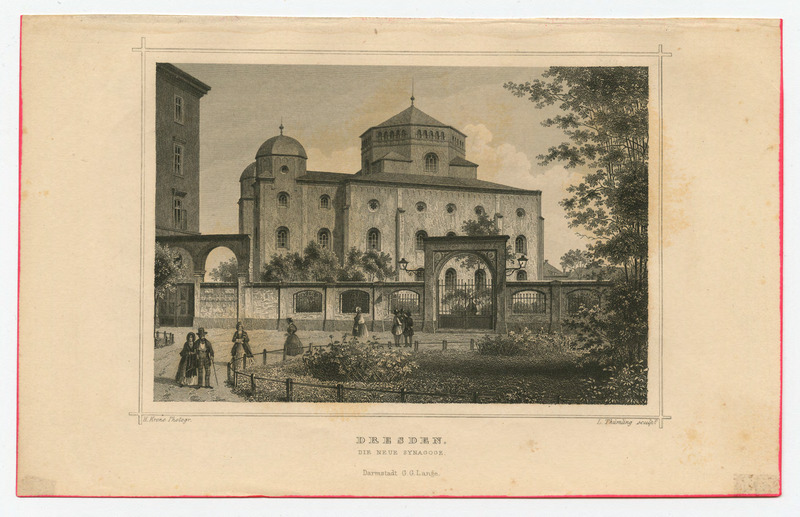Biographical/Historical Information
Also known as the Semper Synagogue, as it was designed by Gottfried Semper (1803-1879), it was constructed from 1838 to 1840, and was inaugurated in 1840. It was among the first modern synagogues to be built in the Moorish style, as part of the Moorish revival movement. Though the exterior was romanesque and relatively subdued, the interior was lavishly outfitted in a moorish revival style, with columns copied form the Alahambra. Semper's moorish revival style was widely admired and imitated elsewhere, like in Leipzig where Semper's student Otto Simonson designed the synagogue. The synagogue was burnt down on Kristallnacht, 9th of Nov, 1938. The only surviving piece of the building was a Star of David that had been on the top of the building, but had been saved by a firefighter, Alfred Neugebauer, who returned the star in 1949.
Born in Breslau in 1827, Hermann Krone studied lithography under his father. He discovered photography and produced his first calotype and daguerreotype photographs in 1843, eventually opening two studios in Leipzig and Dresden within a year of each other in 1851. He is notable for his landscape photographs, particularly of Saxony. He published books of his photography and poetry, and established his own publishing house in 1869. He died in 1916 near Dresden.
Ludwig Thümling was a German engraver active in the 19th century, mainly in Karlsruhe. Many of his works were published by Gustav Georg Lange and depicted landscapes and architecture in various cities.
Reproductions and Permissions
We welcome fair use of this content. Please credit the Leo Baeck Institute in your citation. For usage policies and to request higher resolution images, see Reproductions and Permissions.
Citation
Krone, Hermann: Dresden, the New Synagogue, Leo Baeck Institute, 78.1837.
